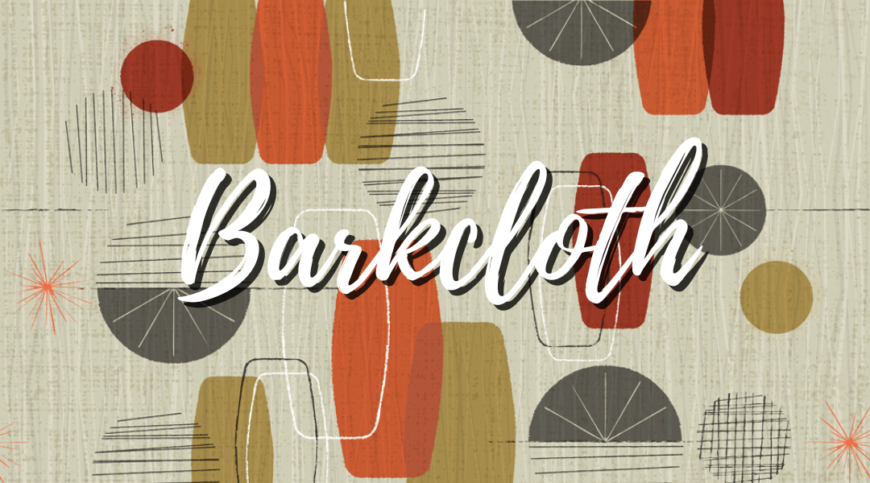Unveiling Barkcloth—A Sustainable Tradition Woven into Modern Fashion and Decor
What is Barkcloth?
Barkcloth, as the name suggests, is a textile made from the inner bark of certain trees. The process of making barkcloth is labor-intensive but environmentally friendly, as it does not require the use of chemicals or large amounts of water. Traditionally, artisans would harvest bark from trees such as the paper mulberry (Broussonetia papyrifera) or the fig tree (Ficus spp.), using techniques passed down through generations.
While quilters have long cherished traditional quilting fabrics like cotton and linen, barkcloth adds a rich cultural heritage and unique texture to quilting projects. In this blog post, we’ll delve into the beauty and versatility of using barkcloth in quilting, from its sustainable origins to its distinct aesthetic appeal.
Unraveling the Beauty of Barkcloth
Barkcloth, crafted from certain trees’ inner bark, has a history as rich and textured as the fabric itself. Traditionally made by indigenous communities in Africa, Asia, and the Pacific Islands, barkcloth is prized for its durability, versatility, and cultural significance. Today, barkcloth continues to be celebrated for its sustainable qualities and unique texture, making it a compelling choice for quilters seeking to infuse their projects with history and heritage.
The Art of Barkcloth Quilting
Quilting with barkcloth offers a truly distinctive experience, allowing quilters to explore new textures and techniques while paying homage to traditional craftsmanship. The tactile nature of barkcloth lends itself well to both hand and machine quilting, providing a satisfying tactile experience as you stitch each piece together. Its slightly nubby texture adds depth and dimension to quilts, creating a visually interesting and tactilely pleasing surface.
Harnessing the Power of Tradition
Incorporating barkcloth into your quilting projects is not just about creating beautiful works of art—it’s also about honoring the traditions and cultures from which the fabric originates. Barkcloth quilts are imbued with a sense of history and heritage, connecting quilters to the artisans who have woven this fabric for generations. Whether used as the main fabric or as an accent, barkcloth adds a touch of authenticity and soulfulness to quilts, transforming them into cherished heirlooms that tell a story.
Tips for Quilting with Barkcloth
Quilting with barkcloth requires a few considerations to ensure success and longevity:
- Preparation: Before cutting and piecing, pre-wash the barkcloth to remove any sizing or shrinkage.
- Needles and Thread: Use a sharp needle and a sturdy thread suitable for sewing through thicker fabrics like barkcloth.
- Pressing: Use a low heat setting and press gently when ironing barkcloth to avoid damaging the fibers.
- Embrace Texture: Experiment with different quilting techniques, such as trapunto or free-motion quilting, to enhance the texture and dimension of your barkcloth quilt.
Cultural Significance
The history of barkcloth stretches back thousands of years, with evidence of its use found in archaeological sites across the world. In Africa, barkcloth holds significant cultural and ceremonial value, with intricate patterns and designs reflecting the heritage of various tribes. Similarly, in Asia and the Pacific Islands, barkcloth has been woven into rituals, ceremonies, and everyday life, often adorned with symbolic motifs representing nature, ancestors, or spiritual beliefs.
Modern Applications
While barkcloth has deep cultural roots, its appeal extends far beyond traditional settings. In recent years, designers and artisans have embraced barkcloth for its sustainable qualities and unique texture. In fashion, barkcloth is prized for its durability and distinctive appearance, with designers incorporating it into clothing, accessories, and footwear. Its versatility allows for a range of styles, from casual wear to high fashion couture.
In interior design, barkcloth adds a touch of natural elegance to homes and commercial spaces. Curtains, upholstery, and wall coverings made from barkcloth bring warmth and texture to any environment, creating a connection to nature within indoor spaces. Additionally, the acoustic properties of barkcloth make it an ideal choice for soundproofing and noise reduction in architectural applications.
Sustainability and Ethical Production
One of the most compelling aspects of barkcloth is its sustainability. Unlike conventional textiles, which often rely on intensive farming practices and chemical processing, barkcloth production has minimal environmental impact. Harvesting bark does not harm the trees, which continue to grow and regenerate, making barkcloth a renewable resource. Furthermore, the craftsmanship involved in barkcloth production supports local communities and preserves traditional knowledge and skills.
Embracing a Timeless Tradition
As we navigate the challenges of environmental degradation and climate change, the resurgence of ancient materials like barkcloth offers a glimpse into a more sustainable future. By honoring cultural heritage and embracing eco-friendly alternatives, we can weave a new narrative for fashion, design, and craftsmanship. Barkcloth serves as a reminder of the interconnectedness of past, present, and future, bridging generations and cultures through the timeless art of textile weaving.
Conclusion
Quilting with barkcloth is a journey of discovery, creativity, and cultural appreciation. By harnessing the power of tradition and embracing the unique qualities of this remarkable fabric, quilters can create quilts that not only delight the senses but also honor the artisans who have kept the tradition of barkcloth weaving alive for centuries. So why not embark on your own barkcloth quilting adventure and weave a piece of history into your next quilt?


